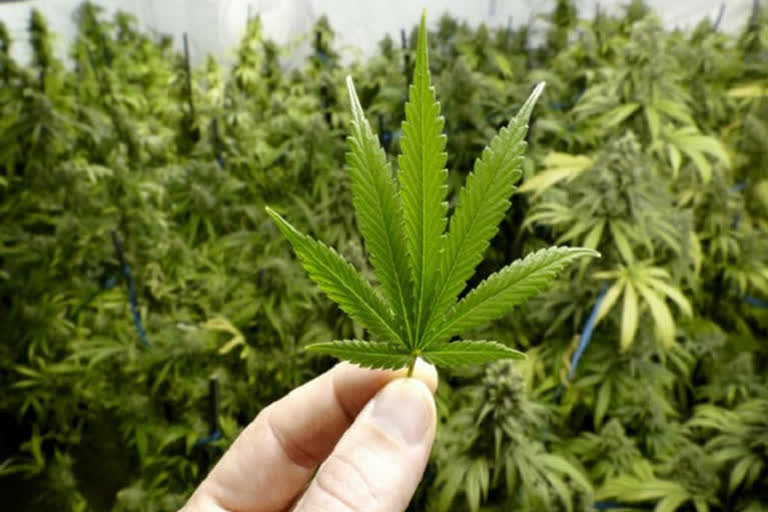Hyderabad: With market reports projecting the marijuana industry to earn over 15 billion by end of 2020 in the US alone, Indian seed sector is missing out on a golden opportunity to conserve and develop our native marijuana and hemp plant genetic resources.
Nature has blessed our Indian subcontinent with the Cannabis Indica variety of marijuana and each region of India with many sub-varieties which have used for centuries. It had a sacred function within our socio-economic life of the subcontinent. Apart from the recreational and religious uses, marijuana and hemp today have hundreds of applications from pain medication, clothing to construction.
The medical cannabis business is only the tip of the ice-berg as each part of the plant can be utilized by one industry or another. ‘King Cotton is already being challenged by a more sustainable, cheaper and less water-intensive Hemp (Cannabis Sativa L). From the plant genetic resource (PGR) vantage point, we are sitting on a treasure-trove, and yet no efforts have been made to utilize it. India has been sluggish to conserve and categorize the resources based on use – fibre, medicine, etc. Keep in mind that till 1985, marijuana was legally sold at government licensed shops and Bhang is still sold in India.
Under American pressure, India banned the plant overlooking the fibre, food and medical uses. The ban also damaged the conservation and allowed for redundancy and contamination to creep in. Now, the US is leading the drive for legalization, and the US marijuana industry earns billions and also employs a substantial workforce. They have one the largest collection of marijuana and hemp PGR, which they are patenting too.
Marijuana naturally grows in many parts of the country and is certain pockets grown illegally as part of the narcotics trade. As the illegal trade flourishes the government and industry loses revenue, and we also risk contamination of foreign seeds and genetically modified (GM) seeds in eco-sensitive zones such as Himachal Pradesh, etc. Although some states have taken steps for commercial cultivation of hemp and hemp-based products, India is far from surfing marijuana dollar wave.
The government needs to step in and deregulate hemp and marijuana seeds for Research and Development (R & D) purposes. Indian seed companies need to be exempted and allowed to study and research native varieties with farmers or by building research stations. Areas such as Himachal Pradesh, Uttrakhand, Kerala, and parts of the North-east can serve as good locations. This will boost local economies and also curb illegal trade.
Given its myriad uses, a thorough assessment of the native PGR should be conducted by ICAR and state agricultural universities. NBPGR can conserve biodiversity resources and categorise them for use in India. The private sector and banks can play a pivotal role in supporting public-private research. Indian seeds and PGR have the potential to be the pillar for the global boom. By having a progressive seed export policy, we can even encourage foreign hemp and marijuana companies to ‘make & research-in-India’.
India must allow them to set up bases in partnership with Indians. Israel and Germany are already the top importers of cannabis flower, by allowing deregulation we may become top exporter, bolstering incomes for farmers and industry. We need to allow custom export programs from marijuana and hemp and also facilitate allied and processing industry to establish bases in India. As a pilot, we can experiment by tweaking the Excise Act, to allow cultivation and processing, similar to opium, for marijuana research, but hemp cultivation and research should be completely deregulated. The state governments’ have the legal power to do so.
As cotton is a very intensive crop, requiring tones of fertilizers, pesticides, water etc India can even diversify our textile industry and become a hub from Hemp textiles. Indian climate and soil are well suited to grow hemp across the country and farmers can benefit by growing hemp. This will also facilitate setting up of decentralized textile hubs across India. Hemp is a more sustainable and ecological alternative to cotton, which is marred by farmers’ suicides, soil and water depletion.
The textile ministry should initiate a study on hemp textile and how it may boost the farmers’ incomes and help the Indian textile sector leapfrog to be the leading producer of hemp cloth and fabric in the world. By embracing the gifts of our native biodiversity, India industry and farmers have the strength to be pioneers in hemp and marijuana products. But will the government, deregulate or wait for another foreign corporation to patent our biodiversity and profit from the fruits of our genetic diversity?



